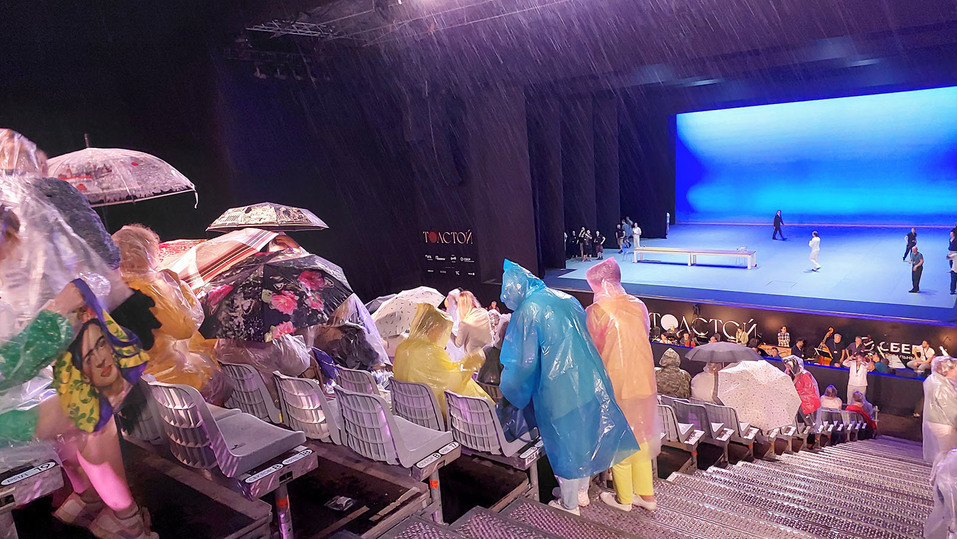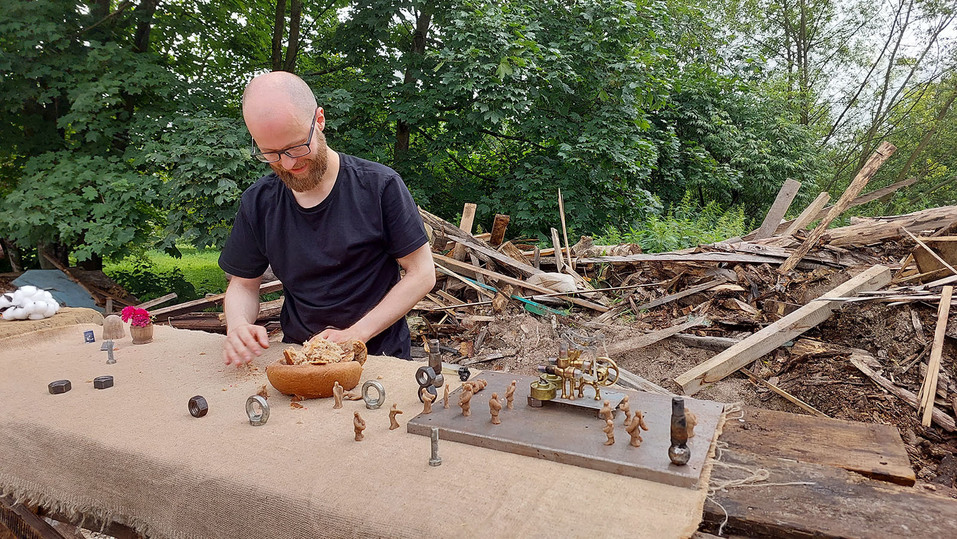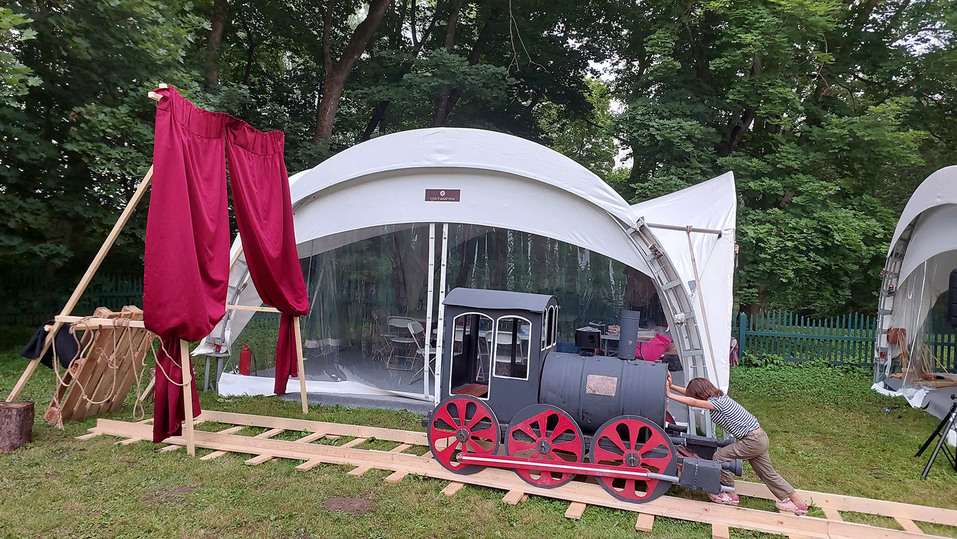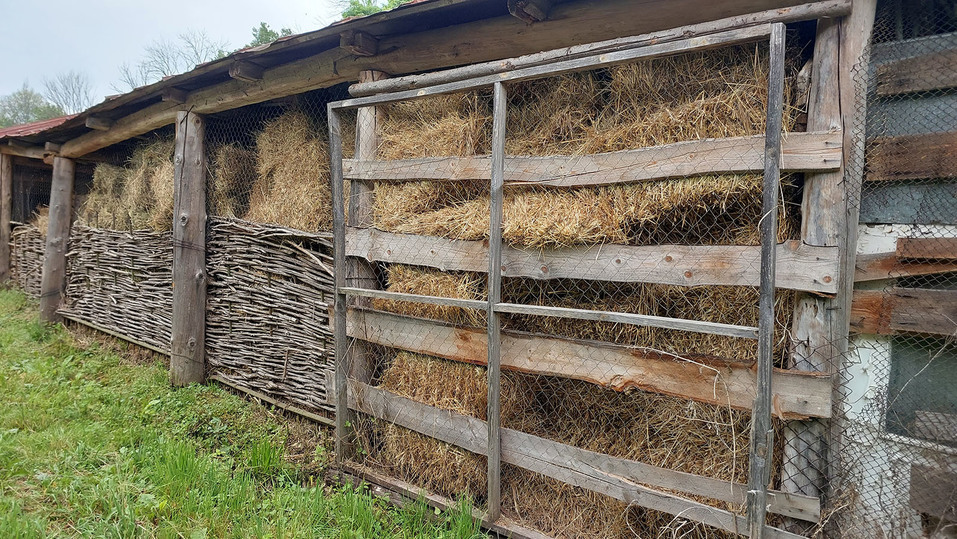At the railway station where Tolstoy’s body was brought, they played a performance based on Anna Karenina
[ad_1]
But the main event was nevertheless the ballet Anna Karenina directed by the choreographer and director of the Hamburg Ballet John Neumeier, who did not seek to literally reproduce what Tolstoy wrote, but conveyed what he felt in his novel.
On the outskirts of the estate for the performance, a stage was built with the same parameters as in the Bolshoi Theater. The general director of the Bolshoi Vladimir Urin, anticipating the dress run, said: “We did not have faith that this performance would take place. We set certain requirements, and the festival fulfilled them. Let’s play in an open field.”
The action has been moved to the present day. Anna dies, falling into the underworld. Farmer Levin fit perfectly into the unusual surroundings, and the tractor’s departure to the stage looked different than in the walls of the Bolshoi Theater.
Anna was danced by the amazing Kristina Kretova, who soared like a moth and butterflies that flocked to the light that evening. The artists were inspired: in such conditions they had not yet had to dance, they talked about how Tolstoy, who did not like ballet, would take it.
During the first act, the sunset blazed. During the intermission, thunder rumbled, lightning flashed. This is how Tolstoy’s novel ends. The audience was given raincoats, and we watched the second act under the streams of water. Don’t forget this.

Festival performances were played in the open air and in the buildings of the estate. The name “excursions in the genre of the theater of the subject” “Bitter Radish” staged by Misha Plutakhin is not accidental. In 1874, Tolstoy gave the first chapters of the novel to the Russian Messenger, continuing the work, which was hard. Then he wrote: “My Anna has bothered me like a bitter radish.” Spectators wandered around the estate with actors who demonstrated on fingers and pans, with the help of bread men, at tables set in an apple orchard, as Anna Karenina was being created.

Karlsson Haus from St. Petersburg brought several performances for children, among them “My name is Pippi”, which was played in the riga. Children first learned what it was when they entered the hay-smelling building. They were involved in a variety of games and master classes based on the works of Tolstoy, and here they could not do without a mini-railway with wooden rails next to the beds and greenhouses.

At the railway station Kozlova Zasek (Yasnaya Polyana) a musical and plastic performance “Mara” by choreographer Albina Vakhitova was shown. It was there that from the Astapovo station in 1910, in the early morning at 6:30, a train arrived with the body of Tolstoy.
Spectators were given monocles so that they could observe what was happening from a distance. The authors suggested “reading the surrounding reality as a set of planes that change with the angle of view, where the actual scale is reduced to a two-dimensional appearance.”
“When I first arrived at the Yasnaya Polyana station, I was overcome by a sense of timelessness,” recalls Albina Vakhitova. “Immense space, deserted, endless vista. A void that cannot be filled. In my work, I want to invite viewers to become co-authors of a performance inspired by the novel Anna Karenina using several space framing tools.”
Actors quickly moved along the platform along the freight train. Spectators watched them across the railroad tracks. At some point, the freight train started moving. It seemed that this was intended, but the station employee explained: “The trains were on schedule.”
A monologue sounded desperately over the station: “I’m working, I want to do something. Death, death, death… Inevitable death. I forgot it would all end.” How the echo spread: “Anna, Anna …”
At this time, an actress in black was writhing in agony on the platform, then another in white. The voice from above continued: “No freedom – that’s happiness. Freedom? Why, why, why?”
The performance was watched by the station staff and security. “How long I have lived, I haven’t seen this”, “Our employees will not pass the commission after this,” they said. The cinematic runs remained in my memory, fortunately, nature presented the sky with amazing beauty.
Films were shown for the first time in Tolstoy’s hayloft. The screen was buried in hay, there was hay underfoot. The film program is supervised by the great-great-great-grandson of Lev Nikolayevich, the young film director Ivan Tolstoy. Screen tests for Tolstoy’s adaptation of Family Happiness were held in the apple orchard. The picture will be taken by Ivan’s classmate at the VGIK workshop of Sergei Solovyov, Stasya Venkova. Some scenes were filmed in the estate, and the audience witnessed a live film process.

There are many film interpretations of Anna Karenina. The great-great-grandson of the writer Vladimir Tolstoy considers Sophie Marceau to be the best Karenina in cinema, and the writer Pavel Basinsky prefers the adaptation of Alexander Zarha with Tatiana Samoilova and Edmund Goulding’s black-and-white “Love” in 1927 with Greta Garbo.
The film-ballet “Anna Karenina” to the music of Rodion Shchedrin was directed by Margarita Pilikhina, the cousin of Marshal Zhukov, the cameraman of “Zastava Ilyich” Marlena Khutsiev. Her film was released in 1974, and in 1975 she died at the age of 48. The part of Anna was performed by Maya Plisetskaya in the amazing costumes of Pierre Cardin. The performer of the role of Vronsky, Alexander Godunov, during the tour of the Bolshoi in the USA in 1979, asked for political asylum, after which the picture of Pilikhina seemed to disappear.
Fekla Tolstaya was responsible for the cycle “Tolstoy’s Word”, gave a lecture on how the texts of her famous ancestor reached the readers.
The publication of the 90-volume collected works was almost a feat on the part of Tolstoy’s friend and editor Vladimir Chertkov and the youngest daughter of the writer Alexandra. The novel was published like a TV series. And Chertkov sought a meeting with Lenin in order to publish the complete works. Lenin approved the idea, but it took years to implement it, and the issue was already resolved with Stalin.
For the distribution of Tolstoy’s texts, people were imprisoned, and the writer himself said that it would be worthwhile to imprison him in such a case. Fekla showed copies of Anna Karenina’s drafts under the working titles Two Marriages and Well Done Baba.
The theme was continued by Pavel Basinsky, who wrote a book about the creation of the novel. He has his own version of the appearance of the name “Well done woman.” Basinsky believes that Anna fell in love not with Vronsky, but with his love for herself, and he gave her what Karenin could not give. At the same time, Karenin is better than Vronsky.
[ad_2]
Source link






